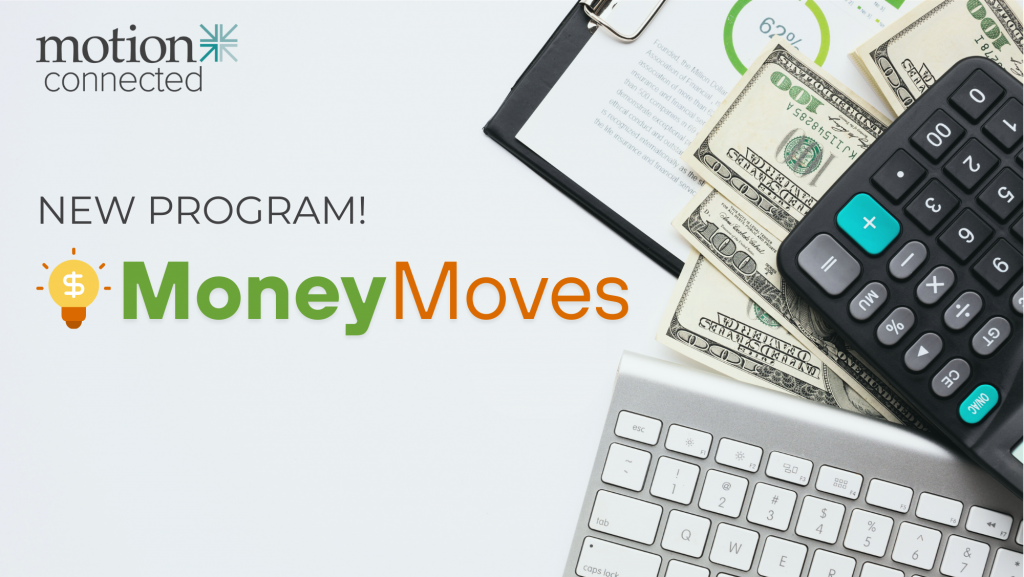When was the last time your wellness program sparked genuine excitement?
Too often, wellness initiatives start with enthusiasm but lose momentum after a few months. Participation drops, challenges fizzle out, and what was meant to energize employees becomes another checkbox item.
The key to lasting engagement lies in something simple: fun.
Adding fun into workplace wellness isn’t about being silly or losing focus on results. It’s about creating energy, connection, and motivation, the things that make people want to participate. When employees enjoy the experience, engagement rises, stress decreases, and wellness becomes a natural part of workplace culture.
At Motion Connected, we’ve seen firsthand how bringing joy into wellness can completely transform a program. After a year filled with creative challenges, interactive booths, and plenty of laughter, we’ve learned that fun isn’t a distraction from wellness, it’s the secret to making it work.
Here are 5 ways to make your wellness program more fun and engaging.
1. Add Friendly Competition
A little healthy competition can go a long way. Whether it’s a step challenge, hydration goal, or activity tracker, adding an element of friendly rivalry gives employees something to rally around.
Competition doesn’t need to be complicated. It can be as simple as setting a collective team goal or creating a leaderboard to celebrate participation. When people can see their progress and cheer each other on, it boosts morale and motivation.
Keep it lighthearted. The goal isn’t to crown a single “winner” but to give everyone a reason to participate. Team-based goals often work best, especially when you encourage departments or locations to collaborate.
Friendly competition is one of the easiest ways to connect remote or hybrid employees who might otherwise miss out on day-to-day connections. A shared goal gives everyone a reason to engage, no matter where they’re working from.
2. Create a Sense of Adventure
Gamification is one of the best tools for making wellness feel exciting. Turning your program into a story with challenges, milestones, and achievements keeps employees interested and gives them something to look forward to.
Think about how you can weave that spirit of adventure into your program. Maybe it’s a “Walk Across the Country” challenge that tracks miles between major cities. Maybe it’s a “Travel the World Through Food” series where employees try healthy recipes from different cultures. Or maybe it’s as simple as rotating seasonal focuses, like a spring “fresh start” or a fall “outdoor movement” challenge.
The goal is to make participation feel like a journey instead of an obligation. When people can connect their progress to a theme or story, it taps into curiosity and imagination, two underrated drivers of wellbeing.
3. Recognize Small Wins
Recognition doesn’t have to mean big prizes or elaborate ceremonies. Sometimes, it’s as simple as acknowledging effort in small, visible ways.
Create moments of celebration throughout your wellness calendar, a shoutout in a company meeting, a “wellness spotlight” email, or a virtual badge for hitting a goal. Even a quick thank-you message can go a long way.
You can also help employees visualize progress. Tracking tools, milestone maps, or even a shared wall (digital or physical) where people mark achievements can make progress tangible. Recognition is about making effort seen and appreciated because when employees feel noticed, motivation naturally follows.
4. Build Community Around Wellness
The social side of wellness is often what keeps people coming back. It’s easier to stay active, consistent, and positive when you’re not doing it alone.
Try incorporating group elements into your programs, team check-ins, shared playlists, coffee walks, or online chats where people share updates and encouragement. These small touchpoints create accountability, but more importantly, they build connection.
This approach is especially valuable for remote or hybrid teams. When people aren’t sharing a physical workspace, wellness initiatives can serve as a fun reason to reconnect. Whether it’s a shared goal, a challenge update, or just swapping photos from daily walks, wellness becomes a way to maintain culture from afar.
5. Keep It Seasonal and Fresh
The best wellness programs evolve with the calendar. Rotating challenges and seasonal themes help employees stay interested throughout the year and give your program a sense of momentum.
Wellness programs lose steam when they start to feel repetitive. Variety keeps things interesting and gives employees something to look forward to.
For example:
- Winter: A focus on mindfulness and staying active indoors
- Spring: Outdoor step goals and renewal challenges
- Summer: Hydration, healthy eating, or movement breaks
- Fall: Gratitude or mental health awareness
This seasonal rhythm keeps participation high without overwhelming employees. It also makes your program easier to plan and evaluate in smaller, more meaningful cycles.
Bringing It All Together
Bringing fun into wellness isn’t about adding bells and whistles; it’s about creating experiences that feel human. When employees enjoy what they’re doing, the benefits go beyond physical health. Energy rises, stress decreases, and connection grows.
The best part? You don’t need a huge budget or complicated platform to make it happen. Start small. Ask for feedback. Celebrate what’s already working. Over time, you’ll build a culture where wellness isn’t a requirement, it’s something people genuinely want to be part of.
Because when wellness is fun, it works.
Want inspiration for bringing more fun into your wellness strategy next year?
Explore how Motion Connected helps organizations build programs that engage and connect employees in the office and beyond!




